Indigenous Communities Used The Caribbean Sea As An Aquatic Highway
Conny Waters - AncientPages.com - With some 7,000 islands and cays and a 7,000-year history of human habitation, the Caribbean Sea is practically synonymous with maritime travel. The very word "canoe" is derived from the term "kana:wa," used by the Indigenous Arawakans of the Caribbean to describe their dugout vessels.
Ancient pottery holds clues to the past lives, traditions, and movements of Indigenous people from the Caribbean Islands. Credit: Florida Museum photo by Kristen Grace
Without clear road signs to indicate where native islanders were traveling, however, the task of reconstructing ancient trade routes relies on subtle clues locked away in the archaeological record. Researchers at the Florida Museum of Natural History recently turned to pottery to tease apart the navigational history of the Caribbean, analyzing the composition of 96 fired clay fragments across 11 islands.
The study, published in the Journal of Archaeological Science: Reports, is the broadest of its kind yet conducted in the Greater Antilles and marks the first time that pottery artifacts from the Lucayan Islands—The Bahamas plus the Turks and Caicos Islands—have been analyzed to determine their elemental composition and origin.
"Our methods mark a big improvement over other studies that mostly look at a single site or single island, where you might see differences but not know what it means because you're looking at the results in isolation," said co-author Lindsay Bloch, a courtesy faculty member with the Florida Museum's Ceramic Technology Lab.
Indigenous Caribbean islanders developed elaborate and ornate pottery styles that varied across time and between cultures. Credit: Lindsay Bloch
People have lived on the Caribbean islands on and off for more than 7,000 years, migrating in waves from Central and South America. As early as 800 B.C., new groups arrived from Venezuela and established a trading network among islands, which they used to exchange food, tools and jewelry. But the most common artifacts that survived to the present are the pottery vessels these objects were carried in.
"Most materials don't preserve well in the Caribbean because of the warm, humid environment, but pottery is durable, so it ends up being one of the most common things we find," said lead author Emily Kracht, a collections assistant in the Ceramic Technology Lab.
Over the ensuing millennia, different Caribbean cultures developed unique styles and techniques for constructing their pottery. Some artifacts are simple and unadorned, while others are highly decorated, with a lattice of incised lines, punctations, raised ridges and flared rims.
Many studies have relied almost entirely on similarities in style to distinguish between different cultures and infer their movements. But, as Bloch explains, this method has often left more questions than answers and excludes material with potentially valuable information.
Pottery from the Caribbean are relatively durable and are often the most common artifacts unearthed from archaeological sites. Credit: Florida Museum photo by Kristen Grace
"The vast majority of pottery that we find anywhere in the world is going to be undecorated. It's going to be things used for cooking or storage, which are typically plain and often get ignored because they're seen as generic," she said.
Rather than studying the minutiae of varying styles, the researchers focused instead on what the pottery was made of. Using a laser to etch microscopic lines into their samples, the researchers determined the exact amounts and identities of each element in the clay used to make the pottery. Their final analysis included more than seven decades' worth of archaeological collections that span over 1,000 years of Indigenous Caribbean history.
"One of the advantages of elemental analysis is that we're explicitly looking for differences, which allows us to see where a pot was made and compare that to where it ended up," Bloch said.
Such detailed comparisons are possible due to the complexity of the Caribbean's underlying geology. The largest islands in the archipelago likely got their start as an ancient underwater plateau in the Pacific Ocean. After the breakup of the supercontinent Pangaea, the Caribbean plate drifted east in a flurry of volcanic eruptions that elevated the plateau above sea level before ultimately reaching its current position in the Atlantic.
Millions of years of weathering reduced these volcanic outcrops into fine-grained clays with differing concentrations of elements like copper, nickel, chromium and antimony. These differences mean that even the smallest Caribbean pottery sherd bears the elemental signature of the region it was made in.
The results of researchers' comparative analysis aren't what might be expected by simply looking at a map. The Lucayan Islands were initially used only temporarily for harvesting resources, and the people who traveled to them would have set sail from the larger islands to the south that supported permanent population centers.
Cuba might initially seem like it's the perfect staging ground for these operations, being by far the largest Caribbean island and the closest to The Bahamas. While people did make the trek across open water from Cuba, the results of the study indicate the Caribbean's cultural hub was instead centered on the northwest coast of Hispaniola, from which people imported and exported goods for hundreds of years.
"At least some of the pottery would have been used to ferry goods out to these islands, and people would potentially carry back a variety of marine resources," Bloch said.
People eventually struck up permanent settlements in The Bahamas and Turks and Caicos, becoming collectively known as the Lucayans, or the People of the Islands. They began making their own pottery from claylike soils deposited by African dust plumes blown in from the Saharan Desert, but the results didn't quite hold up to the pottery from Hispaniola—literally. Lucayan pottery, called Palmetto Ware, is most often thick and soft and crumbles over time due to the poor quality of the grainy Saharan soil.
Thus, up until the arrival of the Spanish, Hispaniola remained the main trading partner and exporter of pottery to the Lucayan Islands.
"We knew that the Lucayans were related to people in Hispaniola, and this study shows their enduring relationship over hundreds of years through pottery," Kracht said.
Written by Conny Waters - AncientPages.com Staff Writer
More From Ancient Pages
-
 There Is Evidence Humans Reached North America 130,000 Years Ago – Archaeologist Says
Archaeology | Mar 28, 2022
There Is Evidence Humans Reached North America 130,000 Years Ago – Archaeologist Says
Archaeology | Mar 28, 2022 -
 Nabataean Culture Lived On Long After Their Kingdom Disappeared – New Evidence
Archaeology | Feb 27, 2019
Nabataean Culture Lived On Long After Their Kingdom Disappeared – New Evidence
Archaeology | Feb 27, 2019 -
 Coyote – Native American Trickster, Creator, And Sacred Animal Who Can Deceive But Also Give Wisdom
Featured Stories | Apr 28, 2017
Coyote – Native American Trickster, Creator, And Sacred Animal Who Can Deceive But Also Give Wisdom
Featured Stories | Apr 28, 2017 -
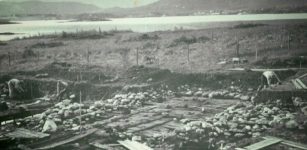 Lost Viking Village Borgund And Its 45,000 Artifacts Hidden In A Basement Examined By Experts
Archaeology | Apr 22, 2022
Lost Viking Village Borgund And Its 45,000 Artifacts Hidden In A Basement Examined By Experts
Archaeology | Apr 22, 2022 -
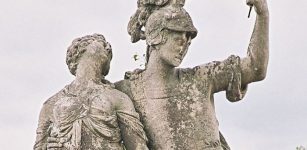 Tyrannical Tarquin The Proud: The Seventh And Last King Of Rome Was Banished
Featured Stories | Jan 28, 2020
Tyrannical Tarquin The Proud: The Seventh And Last King Of Rome Was Banished
Featured Stories | Jan 28, 2020 -
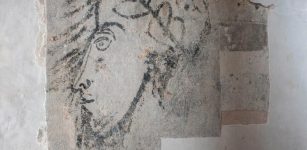 Sir Walter Raleigh ‘Self-Portrait’ Discovered Behind Walls In The Tower Of London
Archaeology | Nov 5, 2018
Sir Walter Raleigh ‘Self-Portrait’ Discovered Behind Walls In The Tower Of London
Archaeology | Nov 5, 2018 -
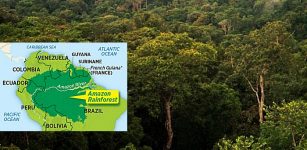 Indian Black Earth And Biodiversity Of The Amazon – New Study
Archaeology | Jun 24, 2020
Indian Black Earth And Biodiversity Of The Amazon – New Study
Archaeology | Jun 24, 2020 -
 Child Finds Impressive 1,800-Year-Old Ring Engraved With Goddess Minerva On Mount Carmel, Israel
Archaeology | Jul 17, 2024
Child Finds Impressive 1,800-Year-Old Ring Engraved With Goddess Minerva On Mount Carmel, Israel
Archaeology | Jul 17, 2024 -
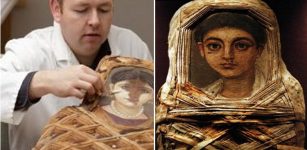 Unexpected discovery of hidden color in ancient mummy portraits
News | Aug 27, 2015
Unexpected discovery of hidden color in ancient mummy portraits
News | Aug 27, 2015 -
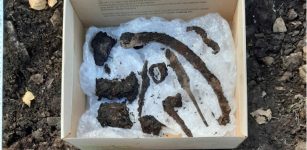 Viking Grave Discovered In The Middle Of Oslo, Norway
Archaeology | Dec 23, 2022
Viking Grave Discovered In The Middle Of Oslo, Norway
Archaeology | Dec 23, 2022 -
 Challenging Prehistoric Gender Roles – Women Were Hunters Too – Not Just Men
Archaeology | Oct 21, 2023
Challenging Prehistoric Gender Roles – Women Were Hunters Too – Not Just Men
Archaeology | Oct 21, 2023 -
 Early City Planning In The Kingdom Of Judah Examined
Archaeology | Jul 5, 2023
Early City Planning In The Kingdom Of Judah Examined
Archaeology | Jul 5, 2023 -
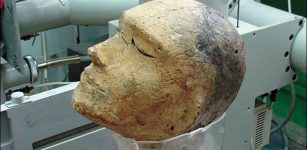 Mystery Of Unique 2,100-Year-Old Human Clay Head With A Ram’s Skull Inside
Archaeology | Apr 18, 2020
Mystery Of Unique 2,100-Year-Old Human Clay Head With A Ram’s Skull Inside
Archaeology | Apr 18, 2020 -
 Cornucopia – ‘Horn Of Plenty’ – Ancient Symbol And Its Almost Forgotten Meaning
Ancient Symbols | Jan 14, 2019
Cornucopia – ‘Horn Of Plenty’ – Ancient Symbol And Its Almost Forgotten Meaning
Ancient Symbols | Jan 14, 2019 -
 The Chinese Nostradamus And His Striking Predictions
Featured Stories | Sep 15, 2018
The Chinese Nostradamus And His Striking Predictions
Featured Stories | Sep 15, 2018 -
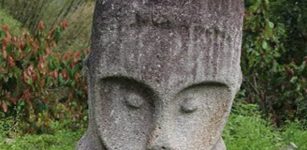 Mysterious Prehistoric Statues In Bada Valley, Indonesia Surrounded With Countless Legends
Civilizations | Jan 9, 2019
Mysterious Prehistoric Statues In Bada Valley, Indonesia Surrounded With Countless Legends
Civilizations | Jan 9, 2019 -
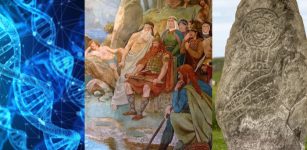 Modern-Day Scottish, Welsh And Northern Irish People Have Pictish Ancestry – New Study
Archaeology | Apr 27, 2023
Modern-Day Scottish, Welsh And Northern Irish People Have Pictish Ancestry – New Study
Archaeology | Apr 27, 2023 -
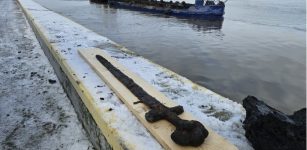 Well-Preserved 1,000-Year-Old Ulfberht Sword Found In The Wisla River, Poland
Archaeology | Jan 23, 2024
Well-Preserved 1,000-Year-Old Ulfberht Sword Found In The Wisla River, Poland
Archaeology | Jan 23, 2024 -
 Enigmatic Newport Tower – Built By The Vikings, Knights Templar, Freemasons Or Someone Else?
Featured Stories | Aug 1, 2024
Enigmatic Newport Tower – Built By The Vikings, Knights Templar, Freemasons Or Someone Else?
Featured Stories | Aug 1, 2024 -
 Killer-Of-Enemies – Mysterious Non-Human Teacher And Hero Of The Apache Indians
Featured Stories | Nov 16, 2020
Killer-Of-Enemies – Mysterious Non-Human Teacher And Hero Of The Apache Indians
Featured Stories | Nov 16, 2020



